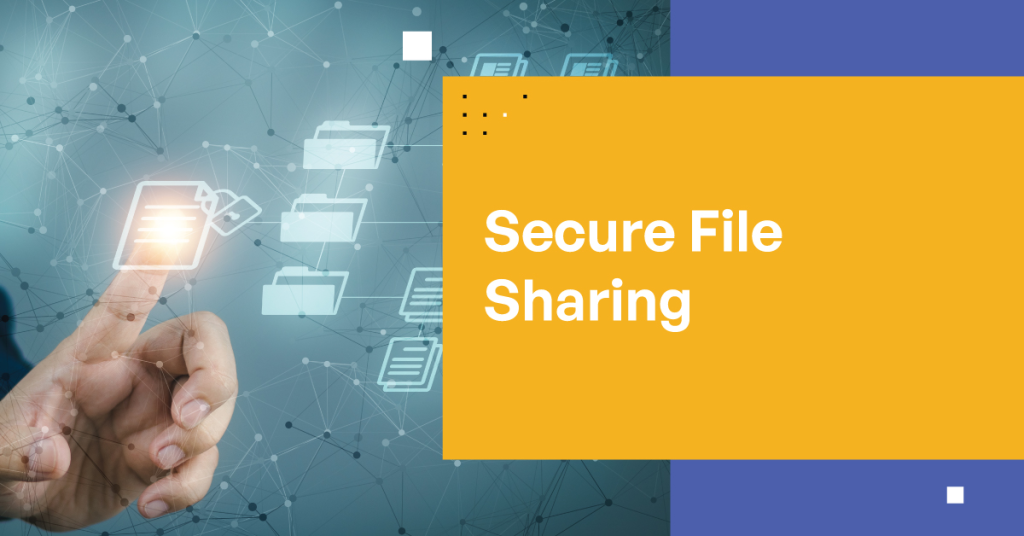In today’s data-driven business landscape, organizations increasingly need to share sensitive information with partners, vendors, clients, and other stakeholders. This collaborative necessity creates significant security challenges as data travels beyond the protective boundaries of internal networks. Implementing robust secure data sharing practices has become essential not just for regulatory compliance, but for maintaining customer trust and protecting valuable intellectual property.
The Growing Importance of Secure Data Sharing
The volume of data being shared between organizations continues to grow exponentially. According to recent industry reports, over 80% of businesses regularly share sensitive data with third parties. This sharing is driven by several factors:
- Cloud adoption accelerating multi-party collaboration
- Increased outsourcing of specialized business functions
- Data-driven partnerships becoming central to business strategy
- Remote work normalizing distributed access to information
- Regulatory requirements for data reporting across industries
While this interconnected ecosystem creates tremendous value, it also introduces significant risks. Data breaches involving third parties tend to be more costly and damaging to reputation than internal incidents. Implementing proper security measures for data sharing isn’t merely prudent—it’s a business imperative.
Understanding Data Sharing Security Challenges
Before implementing solutions, organizations must understand the primary challenges of secure data sharing:
Access Control Complexity
As data moves beyond organizational boundaries, maintaining appropriate access controls becomes increasingly difficult. Questions arise about:
- Who should have access to which specific data elements
- How long access should be maintained
- What actions (view, edit, download) should be permitted
- How access can be effectively revoked when necessary
Data Protection Throughout the Lifecycle
Shared data requires protection at multiple stages:
- At rest (stored in databases or file systems)
- In transit (moving between systems)
- In use (being processed or viewed)
Each stage presents unique security challenges requiring different protection mechanisms.
Visibility and Accountability
Many organizations struggle to maintain visibility once data leaves their environment:
- Tracking where sensitive data resides
- Monitoring how it’s being used
- Documenting who has accessed it
- Ensuring compliance with sharing agreements
Regulatory Requirements
Data sharing often triggers complex regulatory considerations including:
- Industry-specific regulations (HIPAA, FINRA, etc.)
- Data protection laws (GDPR, CCPA, LGPD)
- Cross-border data transfer restrictions
- Data residency requirements

Essential Best Practices for Secure Data Sharing
Implementing the following best practices can significantly enhance the security of your data sharing processes.
1. Implement Comprehensive Data Classification
Secure sharing begins with understanding what you’re protecting. Data classification provides the foundation for all subsequent security controls.
Key implementation steps:
- Develop a tiered classification system (e.g., Public, Internal, Confidential, Restricted)
- Automate classification where possible using content analysis tools
- Regularly review and update classifications as data sensitivity changes
- Train employees to correctly identify and label sensitive information
Data that isn’t properly classified cannot be adequately protected, making this a critical first step in secure sharing.
2. Employ Strong Data Encryption Methods
Encryption transforms data into an unreadable format that can only be deciphered with the appropriate keys, protecting information even if unauthorized access occurs.
Essential encryption practices:
- Implement end-to-end encryption for data in transit
- Use strong encryption for data at rest (AES-256 or similar)
- Maintain secure key management processes
- Consider encrypted file containers for highly sensitive information
- Utilize secure protocols (HTTPS, SFTP, etc.) for all transfers
Encryption provides a critical layer of protection by ensuring that even if data is intercepted or improperly accessed, it remains unreadable without proper authorization.
3. Adopt Granular Access Controls
Not everyone needs access to all shared data. Implementing precise, role-based access controls limits exposure and reduces risk.
Best approaches include:
- Implementing the principle of least privilege
- Using role-based access control (RBAC) frameworks
- Employing attribute-based access control for complex scenarios
- Requiring multi-factor authentication for sensitive data access
- Setting time-limited access for temporary sharing needs
By controlling exactly who can access what information under which circumstances, organizations significantly reduce the risk surface area.

4. Utilize Secure Sharing Platforms
Purpose-built secure sharing platforms offer significant advantages over general-purpose tools like email or consumer file sharing services.
Key features to seek include:
- Enterprise-grade encryption
- Detailed access logging and reporting
- Digital rights management capabilities
- Integration with existing security infrastructure
- Compliance with relevant industry standards
These platforms balance security with usability, encouraging adoption while maintaining appropriate protections.
5. Establish Clear Data Governance Policies
Data governance provides the framework for how data should be shared securely across the organization.
Essential policy elements include:
- Formal data sharing agreements with third parties
- Clear procedures for requesting and approving access
- Regular review processes for existing shares
- Defined data retention and deletion requirements
- Incident response procedures for potential breaches
Documenting these policies ensures consistent application of security measures and creates accountability for secure sharing practices.
6. Implement Comprehensive Audit Trails
Maintaining detailed records of data access and transfer activities provides visibility and accountability.
Effective audit systems should:
- Record all access attempts (successful and failed)
- Log data transfer activities and destinations
- Timestamp all sharing-related activities
- Capture user identity information
- Generate alerts for suspicious activities
- Maintain tamper-proof records
These records prove invaluable for investigating security incidents and demonstrating compliance with regulatory requirements.
7. Adopt Cloud Security Standards
As cloud environments become primary platforms for data sharing, implementing cloud-specific security measures is essential.
Key considerations include:
- Cloud Access Security Brokers (CASBs) to monitor cloud interactions
- Cloud Data Loss Prevention (DLP) tools
- Secure configuration management for cloud resources
- Strong identity and access management for cloud services
- Regular security assessments of cloud providers
Cloud environments introduce unique security challenges that require specialized approaches beyond traditional data protection methods.
8. Conduct Regular Security Assessments
Regular assessment of data sharing security measures helps identify and address vulnerabilities before they can be exploited.
Effective assessment practices include:
- Periodic penetration testing of sharing platforms
- Regular vulnerability scanning of exposed interfaces
- Third-party security audits of sharing processes
- Simulated data breach exercises
- Review of access logs and authorization patterns
These assessments validate the effectiveness of security controls and identify areas for improvement.

Emerging Technologies Enhancing Secure Data Sharing
Several emerging technologies are transforming how organizations approach secure data sharing:
Confidential Computing
Confidential computing protects data while it’s being processed, closing a significant security gap in traditional data protection frameworks. This technology uses hardware-based trusted execution environments (TEEs) to isolate sensitive data processing from the underlying system.
Blockchain for Data Integrity
Blockchain technology provides immutable records of data access and modification, creating verifiable audit trails that cannot be tampered with. This offers unprecedented transparency and accountability in data sharing scenarios.
Homomorphic Encryption
This advanced encryption technique allows computations to be performed on encrypted data without decrypting it first. This means organizations can share encrypted data for analysis while maintaining confidentiality of the underlying information.
Zero-Trust Architecture
Zero-trust approaches assume no user or system should be inherently trusted, requiring continuous verification regardless of location or network. This model is particularly well-suited to secure data sharing scenarios where traditional network boundaries are meaningless.
Creating a Culture of Secure Data Sharing
Technology alone cannot ensure secure data sharing. Organizations must also foster a security-conscious culture where everyone understands their role in protecting sensitive information.
Key elements include:
- Regular security awareness training focusing on secure sharing practices
- Clear communication about security policies and their importance
- Recognition programs for employees who identify security issues
- Leadership that prioritizes security in business decisions
- Integration of security considerations into performance evaluations
When security becomes part of the organizational DNA, secure sharing practices become second nature rather than burdensome requirements.
Conclusion
As data sharing continues to increase in volume and importance, implementing robust security measures is essential for protecting sensitive information and maintaining stakeholder trust. By adopting the best practices outlined in this article—from comprehensive data classification to emerging technologies like confidential computing—organizations can enable productive collaboration while minimizing security risks.
Secure data sharing isn’t merely a technical challenge but a strategic business imperative. Organizations that excel at sharing data securely gain competitive advantages through stronger partnerships, improved customer trust, and reduced risk of costly data breaches. In today’s data-driven economy, the ability to share information securely may well be the difference between success and failure.
Recommended Resources
For organizations looking to enhance their secure data sharing practices, consider these additional resources:
- NIST Cybersecurity Framework for structured security guidance
- Cloud Security Alliance for cloud-specific security recommendations
- Industry-specific information sharing organizations like FS-ISAC or H-ISAC
- ISO 27001 standard for information security management

